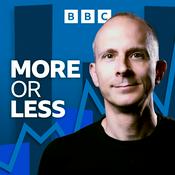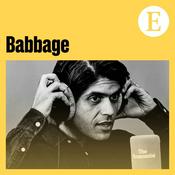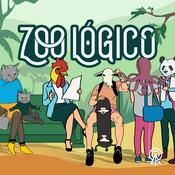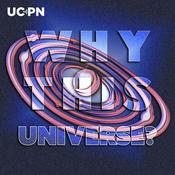34 episódios

What We Know About Biofilms and Dairy—Interview with Authors of the Journal of Dairy Science Special Issue | cohosted by Nicole Martin, PhD
16/12/2025 | 59min
Explore the fascinating, frustrating world of microbial biofilms in this special episode of Dairy Digressions! Matt is joined by returning guest and special cohost Nicole Martin, PhD, assistant research professor in dairy foods microbiology and director of the Milk Quality Improvement Program in the Department of Food Science at Cornell University. In this episode, they host two contributors to the recent Journal of Dairy Science special issue devoted to biofilm formation in dairy: Mérilie Gagnon, PhD, coeditor of the Biofilm Formation in Dairy: A Food Safety Concern special issue and microbiology researcher at the Centre ACER, and Tara Wilson, a food science PhD candidate from the University of Guelph. They explain that these invisible communities of bacteria and fungi cling to surfaces from farm to factory, potentially contaminating milk, causing mastitis in cows, and compromising dairy quality and safety. Given the high level of interconnection in the dairy sector, this special issue aimed to present a holistic “One Biofilm” perspective, emphasizing that understanding and controlling biofilms necessitates an integrated strategy that connects farms, processing plants, and the environment. Mérilie walks listeners through the process of how biofilms form and explains that while not all biofilms are bad—some are central to the development of culture and flavor in dairy and maple syrup products, for example—understanding and controlling them is critical for both human and animal health. Nicole and Tara discuss the miles and miles of piping and equipment in dairies and processing plants, explain the power of a good acid wash, review current cleaning protocols, and explore promising new tools like improved equipment design, ultraviolet detection, and machine learning data-prediction tools that can anticipate increasing biofilm risk. Whether you’re in production or dairy, don’t miss this introduction to the microbes that rule our world! Episode Thirty-Two Show NotesLearn more about our guests and connect with them onLinkedIn: Nicole Martin, PhD, Mérilie Gagnon, PhD, and Tara Wilson. Want even more of the latest dairy food science? Join us atthe ADSA 2026 Annual Meeting in Milwaukee, Wisconsin, next June, and submit your emerging dairy foods research during our call for abstracts, closing February 10, 2026! Do you have publishing plans in 2026? Save on your articlecosts via the ADSA Loyalty Rewards Program for the Journal of Dairy Science and JDS Communications.Explore each of the special issue articles:Biofilm Formation in Dairy: A Food Safety Concern—Introduction, Journal of Dairy Science (2025) Microbial community tracking from dairy farm to factory; Insights on biofilm management for enhanced food safety and quality, Journal of Dairy Science (2025) Biofilms in the milking machine, from laboratory scale to on-farm results, Journal of Dairy Science (2025) Insights into the prevalence of Pseudomonadota and yeasts on milking system surface biofilms, Journal of Dairy Science (2025) Recent progress in antibiofilm strategies in the dairy industry, Journal of Dairy Science (2025) Effect of biofilm production on antimicrobial susceptibility of Staphylococcus aureus bovine mastitis strains from the most prevalent Canadian spa types, Journal of Dairy Science (2025)

Solving the Puzzle of H5N1 in Dairy: A One Health Conversation with Jason Lombard, DVM
02/12/2025 | 1h 4min
In this episode of Dairy Digressions, host Matt Lucy welcomes Jason Lombard, DVM, veterinary epidemiologist, associate professor, and dairy systems specialist at Colorado State University, and lead author of the Journal of Dairy Science invited review, The One Health Challenges and Opportunities of the H5N1 Outbreak in Dairy Cattle in the United States. Drawing on his experience as the point person on the highly pathogenic avian influenza H5N1 outbreak and the learnings he gleaned from his expert coauthors on the review, Jason provides an update on the latest science we have on the virus and reviews its immense impact to date on animals, the US food supply, and people working in agriculture. He explains what the One Health concept means in practice, showing how dairy farms function as complex ecosystems where animals, humans, and environments are linked. The conversation also explores why the exact mechanisms of transmission—whether through the movement of cows, people, trucks, milk, or aerosols—remain so difficult to pin down. Beyond the science, Jason reflects on his career path from veterinary private practice to his time with the US Department of Agriculture to Colorado State University, describing how epidemiology feels like solving a crime, and how curiosity and humility in the face of what we still don’t know fuel his work. This episode offers a critical update on the H5N1 outbreak and connects breaking research with the lived realities of the dairy sector. It underscores why a One Health perspective will be essential not only in navigating H5N1 but also in strengthening the dairy and agricultural sectors for outbreaks yet to come.Episode Thirty-One Show NotesLearn more about Jason Lombard, DVM, and connect with him on LinkedIn. Want more science on the H5N1 outbreak in dairy? Catch up on the JDS Communications special issue on highly pathogenic avian influenza H5N1 in dairy cattle, and join us at the ADSA 2026 Annual Meeting in Milwaukee, Wisconsin, next June! Start earning rewards and journal savings via the ADSA Loyalty Rewards Program for the Journal of Dairy Science and JDS Communications.Catch up on the papers and presentations discussed in theepisode:H5N1 in dairy cattle: What we have learned in the past 18 months, Hoard’s Dairyman webinar (2025)Dairy environments with milk exposure are most likely to have detection of influenza A virus, medRxiv preprint (2025) Invited review: The One Health challenges and opportunities of the H5N1 outbreak in dairy cattle in the United States, Journal of Dairy Science (2025) The devil you know and the devil you don’t: Current status and challenges of bovine tuberculosis eradication in the United States, Irish Veterinary Journal (2023) Bovine tuberculosis at the interface of cattle, wildlife, and humans, pages 829–846 in Tuberculosis: Integrated Studies for a Complex Disease (2023)Human-to-cattle Mycobacterium tuberculosis complex transmission in the United States, Frontiers in Veterinary Science (2021) An impossible undertaking: The eradication of bovine tuberculosis in the United States, The Journal of Economic History (2004)

Mastitis, Microbial Stewardship, and the Importance of Service with ADSA Fellow Pam Ruegg, DVM, MPVM
29/10/2025 | 49min
In this candid and inspiring episode, host Matt Lucy is joined in conversation by Pam Ruegg, DVM, MPMV, ADSA fellow and David J. Ellis Chair in Antimicrobial Resistance and Large Animal Clinical Sciences in the College of Veterinary Medicine at Michigan State University. Pam shares her remarkable and diverse path in dairy science, from working in private practice to corporate technical service at Monsanto and extension appointments to roles in academia. Throughout her career, she has remained focused on improving dairy animal health, milk quality, and farm sustainability. She and Matt discuss her professional passion: understanding, treating, and preventing what she calls the most interesting disease in dairy, mastitis. She explains what we know now about responsible antibiotic use on dairy farms, and her work to identify animal, environmental, and pathogen factors that reduce disease risk. Through her journal publications, worldwide talks, and outreach work (don’t miss her YouTube channel, @TopMilkQuality), Pam provides evidence-based recommendations for mastitis treatments that factor in animal welfare, the economic health of the farm, and social responsibility. She dives into the evolution of US dairy farms over her career, the economics of milk quality, and her views on service and mentorship. Along the way, we hear about why she loved being a section editor for the Journal of Dairy Science and JDS Communications, plus her advice for young scientists: Align your career with what you want to do with your day—and don’t let pushback and self-doubt stop you. Whether you’re a student, researcher, or industry pro, Pam’s story is a masterclass in persistence, progress, and purpose. Episode Thirty Show NotesLearn more about Pam Ruegg, DVM, MPVM, connect with her on LinkedIn, and follow her on YouTube. Want more dairy health science and connections with mentors? Join us at the ADSA 2026 Annual Meeting in Milwaukee, Wisconsin, next June! Start earning rewards and journal savings via the ADSA Loyalty Rewards Program for the Journal of Dairy Science and JDS Communications.Catch up on the papers discussed in the episode:The future of udder health: Antimicrobial stewardship and alternative therapy of bovine mastitis, JDS Communications (2025) Making Economically Efficient Treatment Decisions for Clinical Mastitis, Veterinary Clinics: Food Animal Practice (2025) A focus group study exploring necessary competencies and contextual factors for effective antimicrobial stewardship on dairy farms, Journal of Dairy Science (2025) Impact of training dairy farm personnel on milking routine compliance, udder health, and milk quality, Journal of Dairy Science (2025) Economic impact of subclinical mastitis treatment in early lactation using intramammary nisin, Journal of Dairy Science (2024) Mastitis in Dairy Cows, pages 339–365 in Production Diseases in Farm Animals: Pathophysiology, Prophylaxis and Health Management (2024)

Understanding Nutrients as Metabolic Signals, Postcalving Inflammation, and the Value of University Research Dairies with Barry Bradford, PhD
02/9/2025 | 58min
In the latest installment of Dairy Digressions, host Matt Lucy sits down with Barry Bradford, PhD, professor and C. E. Meadows Endowed Chair in Dairy Management and Nutrition at Michigan State University’s (MSU) Department of Animal Science, senior editor for the Journal of Dairy Science, and co-host of The Dairy Podcast Show. After growing up on a seedstock beef operation, Barry was drawn to dairy science because of its incredible complexity. After some gentle pressure from the renowned Don Beitz (and without ever taking a dairy science class!), Barry went to graduate school and now oversees a diverse research program focused on dairy cattle metabolic physiology and providing evidence-based dairy management tips to producers. Listeners will hear Barry’s elevator pitch on the hepatic oxidation theory, which posits that the liver may play a crucial role in appetite regulation in cows, acting as the “traffic cop” of metabolism by sending signals to a cow’s brain regarding feeding behavior. He and Matt also discuss his recent work on inflammation and nutrition during the transition period, touching on how nutrients—including rumen-protected choline and niacin—can act as signals to influence cell physiology and boost performance. Barry also gives us a behind-the-scenes look at MSU’s brand-new, state-of-the-art research dairy, and shares how the facility came to life and why university dairies are essential to advancing real world solutions for producers and the global dairy sector as a whole. From mentoring young scientists to solving on-farm challenges, Barry reflects on the moments that make the long haul of research worthwhile—and offers his best advice on finding your calling and setting the world on fire. Episode Twenty-Nine Show NotesLearn more about Barry Bradford, PhD, and connect with him on LinkedIn.Want even more of the latest dairy food science? Join us at the ADSA 2026 Annual Meeting in Milwaukee, Wisconsin, next June! Start earning rewards and journal savings via the ADSA Loyalty Rewards Program for the Journal of Dairy Science and JDS Communications.Are you looking for tips on crafting your own “on fire” graphic for your next scientific paper? We’ve got you covered with tips and resources for maximizing your research’s visual appeal. Catch up on the papers discussed in the episode and takea virtual tour of MSU’s new dairy:MSU hosts tour of new Dairy Cattle Teaching and Research Center, Michigan State University (2025) Invited review: Inflammation during the transition to lactation: New adventures with an old flame, Journal of Dairy Science (2015)Effects of prenatal dietary rumen-protected cholinesupplementation during late gestation on calf growth, metabolism, and vaccine response, Journal of Dairy Science (2022) Symposium review: Fueling appetite: Nutrient metabolism and the control of feed intake, Journal of Dairy Science (2023) Effects of dietary rumen-protected choline supplementation to periparturient dairy cattle on inflammation and metabolism in mammary and liver tissue during an intramammary lipopolysaccharide challenge, Journal of Dairy Science (2024) Effects of rumen-protected niacin on inflammatory response to repeated intramammary lipopolysaccharide challenges, Journal of Dairy Science (2024) Effects of rumen-protected choline supplementation on lactation performance of dairy cows: A systematic review and dose-response meta-analysis, Journal of Dairy Science (2025) On-farm supplementation of rumen-protected niacin: A randomized clinical trial, Journal of Dairy Science (2025)

Consumer Perceptions of Dairy, Milk in School Lunches, and Finding Your Passion and Purpose with MaryAnne Drake, PhD
08/7/2025 | 36min
We’re bringing you a dairy food science icon on this episode of Dairy Digressions. Host Matt Lucy, PhD, is joined by MaryAnne Drake, PhD, a William Neal Reynolds Distinguished Professor of Food Science at North Carolina State University. MaryAnne is the director of the Sensory Service Center, director of the Southeast Dairy Foods Research Center, an ADSA Fellow who served as ADSA’s first female president, and a fellow of the Institute of Food Technologists. MaryAnne explains her journey from food microbiology to being a leading authority in sensory science, dairy flavor chemistry, and consumer research after a stint working in a creamery during graduate school. She now runs a lab focused on sensory analysis and flavor chemistry of dairy products and ingredients, working to understand how flavor varies with processing and storage, and how these parameters relate to consumer perceptions. Listen in as MaryAnne shares her valuable insights on pressing issues in dairy, from the influence of packaging on school milk flavor—including why the milk carton might not be the best option—to consumer attitudes toward dairy versus plant-based alternatives. The two also discuss sustainability messaging around dairy, milk marketing, and the critical role of school lunch programs in shaping a lifelong love of milk and dairy products. She takes us behind the scenes of her massive lab (which she lovingly calls her “flying three-ring circus”), her work with industry, tips on getting a job in food science, and why finding your passion and purpose is the key to success in science. Finally, she discusses the importance of purpose driven work, the evolving role of women in science, and the intellectual joy of progress, even if it happens on a quiet holiday. Episode Twenty-Eight Show NotesLearn more about MaryAnne Drake, PhD, and connect with her on LinkedIn. Want even more of the latest dairy food science? Join us at the ADSA 2026 Annual Meeting in Milwaukee, Wisconsin, next June! Start earning rewards and journal savings via the ADSA Loyalty Rewards Program for the Journal of Dairy Science and JDS Communications.Catch up on the papers discussed in the episode:Parental perception of children’s school lunch milk, Journal of Dairy Science (2023) The role of packaging on the flavor of fluid milk, Journal of Dairy Science (2023) Parents’ implicit perceptions of dairy milk and plant-based milk alternatives, Journal of Dairy Science (2022)Children's perceptions of fluid milk with varying levels of milkfat, Journal of Dairy Science (2022)Child preferences and perceptions of fluid milk in school meal programs, Journal of Dairy Science (2021)Invited review: Maintaining and growing fluid milk consumption by children in school lunch programs in the United States, Journal of Dairy Science (2020)
Mais podcasts de Ciência
Podcasts em tendência em Ciência
Sobre Dairy Digressions
Ouça Dairy Digressions, Os três elementos e muitos outros podcasts de todo o mundo com o aplicativo o radio.net

Obtenha o aplicativo gratuito radio.net
- Guardar rádios e podcasts favoritos
- Transmissão via Wi-Fi ou Bluetooth
- Carplay & Android Audo compatìvel
- E ainda mais funções
Obtenha o aplicativo gratuito radio.net
- Guardar rádios e podcasts favoritos
- Transmissão via Wi-Fi ou Bluetooth
- Carplay & Android Audo compatìvel
- E ainda mais funções


Dairy Digressions
baixe o aplicativo,
ouça.

































